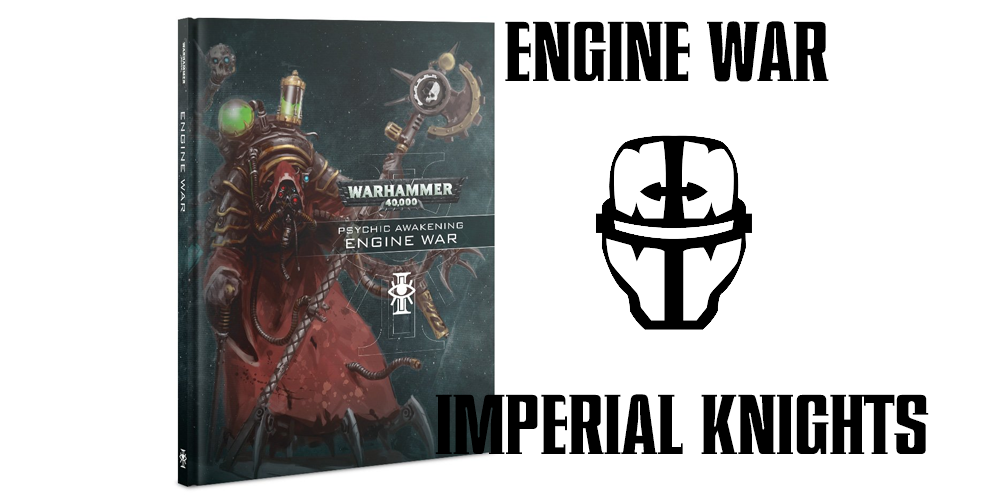The time has come for the most noble defenders of the Imperium to heed the call to war and mount their steeds. In an entirely narratively appropriate fashion, the glory days of Imperial Chivalry where shining Knights could be seen astride near every tournament table in the land are long past us. Dark forces, manifesting in the nefarious guises of “metagame shifts” and “gigantic nerfs” have sore beset those who hold true to the more honourable forms of war, leaving only the most dedicated still striving for victory. Worse still, the sinister forces of the Iconoclast and Infernal houses have been getting the better of the enduring conflicts, pressing loyal forces on all fronts. Those who have held true to the cause surely deserve some aid in this darkest hour. Will they get it?
Kind of? We’re done with the bit now, doing the chivalry stuff is exhausting. Imperial Knights are a faction that’s been in a tough spot for a while, as 2019 was extremely unkind to them. armies adapted to the need to be able to kill Knights, heavy (though at the time necessary) nerfs took out their best stuff, Genestealer Cults (which are a near hard counter to heavy Knight armies) rose to prominence, and then we swung into Space Marine winter and we all know how that went. The sheer brutality of the triple Crusader build (or 2x Crusader + Warden) has occasionally put skilled pilots onto the top table still, and one brave soul even pulled off an event win with a Castellan recently, but it’s tough going.
Engine War finally brings some updates, and the up-front thing to say is that they’re absolutely pure upside – every Imperial Knight list will be actively better after this book. Our overall take is that the Imperial Knights probably don’t get as much out of it as Chaos Knights (whose review you can take a look at here) for reasons we’ll get into, but there’s still stuff to like. Imperial Knights get the following new tools:
- Allegiance Oaths – additional macro-faction traits for pledging your forces to either the Mechanicus or the Imperium.
- Allegiance Warlord traits – three new warlord traits for each of the Allegiances.
- Stratagems – a veritable host of new stratagems focused on handing out unique options for each of the various flavours of Knight.
- Custom Household Traditions – your (by now standard) build-your-own faction traits.
We’ll cover the first two together, as they’re heavily intertwined, then take a look at the other two bits separately.
Allegiances
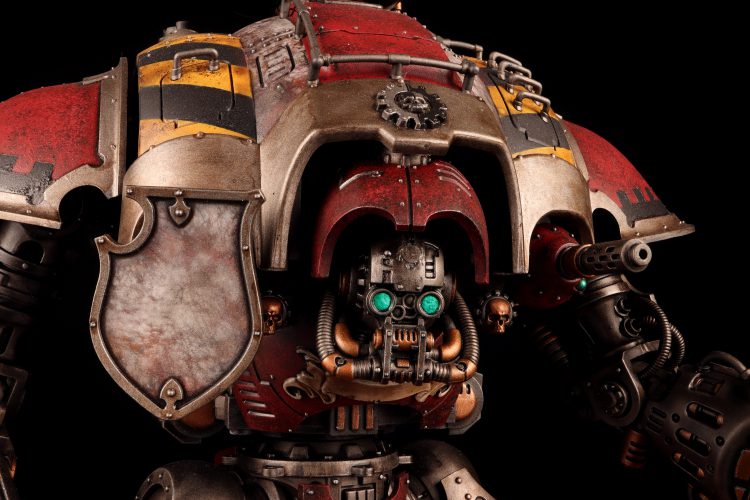
Credit: Pendulin
In many ways the additions to the two Knight factions in Engine War are a mirror – Chaos Knights have gained specific named households similar to the original Imperium book, while the Imperium has gained rules for the two overall Allegiances that the houses sit under, similar to Iconoclasts and Infernals from the Chaos book. The exact way the power levels line up is a bit less precisely reflected – in general the Imperial named Households remain a bit better while the Chaos Allegiances are a lot better, but the Imperium gets the unique add-on of Allegiance warlord traits on top of their array of household ones to balance things out a bit more. This does come back to bite the Imperium pretty hard when we come to look at custom faction traits, but we’ll get to that later. For now, let’s talk the benefits here.
All Knightly Households have either a Questor Mechanicus or Questor Imperialis Allegiance. Assuming a detachment all shares an allegiance, you get a new benefit on all models in the detachment:
- Imperialis: +1″ to advances and charges (which doesn’t stack with any other boosts)
- Mechanicus: Each model heals one wound at the start of each of your turns.
Both of these are fine. In the abstract, the Imperium definitely has it on raw power, but it gets a bit less good in context – Mechanicus houses are generally superior (and that hasn’t really changed) and the Landstrider warlord trait lets you replicate the Imperialis trait (but better) with careful positioning. In addition, the Household with the best synergy with advancing is House Raven, who are Mechanicus, and for most Imperialis units advancing will give up most of their considerable shooting. The charge boost is nice, it’s good for going wide with multiple Knights and there’s probably some game in the fact that you can outflank with a House Terryn Knight and come in with a very reliable charge without paying for Landstrider now. The Mechanicus benefit is much less complicated – it’s just a healthy general boost. It does potentially reward you for going as wide as possible with Armigers, but you don’t need to change your plans at all to benefit from it – it’s just extra payoff from taking the best houses.
In terms of the warlord traits, each Allegience gets 3, and I think in both cases there’s one dud, one modest/flex pick and one pretty good one. The duds are Paragon of the Omnissiah for Mechanicus (two extra wounds) and Revered Knight (fights first) for Imperialis. For both of these there’s things you can take that just have way higher payoff, and probably sit in the D+ range.
The medium ones are Calculated Targeting for Mechanicus and Tireless Duty for the Imperials. Calculated Targeting means you never hit on worse than an unmodified 4+, which is handy as a flex pick against some armies for the rest of 8th, and will still be OK in 9th as it keeps you operating reasonably effectively as your Knight degrades. It does lose points for the fact that you could just use Machine Spirit Resurgent to get the same effect, but saving on the CP over time can help, and it means you can use the strat on a different Knight if you’ve got multiple wounded ones. Tireless Duty gives you a 6″ heroic. This is another effect that you can already access elsewhere (on a Freeblade) but being able to get it on a named house opens up additional options for combinations. Heroic Interventions are one of the key ways for primarily Knight armies to play board control, so adding big ones is pretty relevant. I’d probably put both of these at a C+ – they’re decent effects, but lordy is there heavy competition in Imperial Knights.
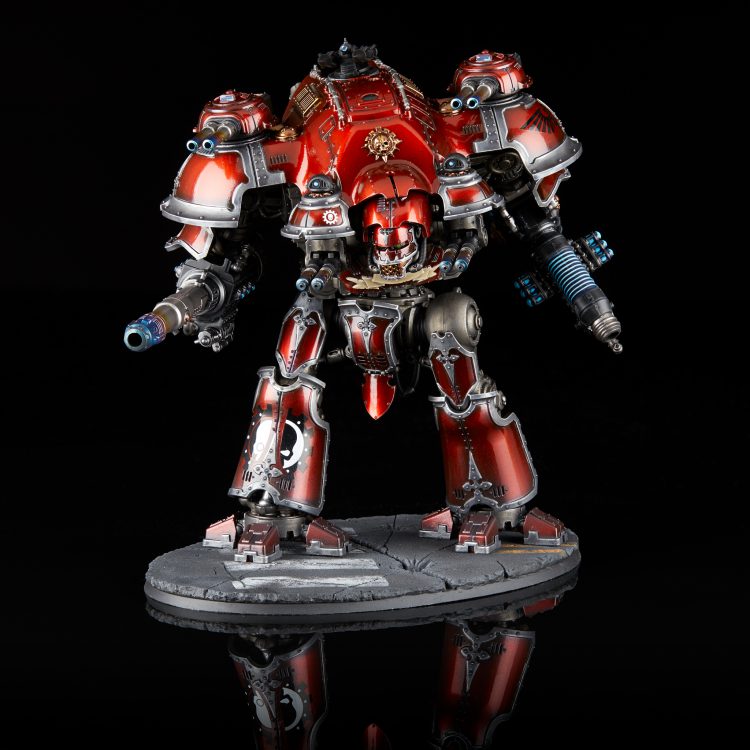
The ones that potentially have real play are Cold Eradication on the Mechanicus Side and Strike and Shield for the Imperials. Cold Eradication lets you roll an extra dice whenever you attack with a weapon that has a random number of attacks, and discard the lowest. This tends to be a powerful effect wherever it turns up, and it’s a particularly good version of it, letting you roll multiple up front and discard rather than re-rolling and risking a worse result. Any Knight packing a rapid-fire battle cannon or thermal cannon can benefit from this, and if you put it on one make sure you give them an ironstorm missile pod. It’s very nice layered up with the Headsman’s Mark, and if you want to try and follow the recent example of running a House Taranis Castellan then this seems like an extremely strong thing to put on it in games where the opponent doesn’t threaten it at range. I’d give this a B+. Strike and Shield gives an Imperialis Knight -1 to be hit in combat, and VEHICLES or MONSTERS attacking it get -1A as well. I think this is plausibly the best of the bunch – dying in melee is a real risk to Knights, and this is a substantial survivability boost. Hand a Knight Sanctuary as well and they’re suddenly pretty resilient to the kind of things that normally prey on them – and also heavily tipped to win any Knight-on-Knight showdowns. I think this is deceptively good, and provides a level of protection Knights often want but is currently locked to House Cadmus. I think it’s hovering between a B+ and an A, I’ll stick to the former because it presumably gets worse in 9th for not working against thunder hammers (Corrode: it will still have marginal utility against Space Wolves, but otherwise yeah).
Overall, even though Knights are very much at the diminishing returns point for getting more options, there are some here that I think will see use and, and combined with the flat upside of the Allegiance traits makes this section a win.
Stratagems
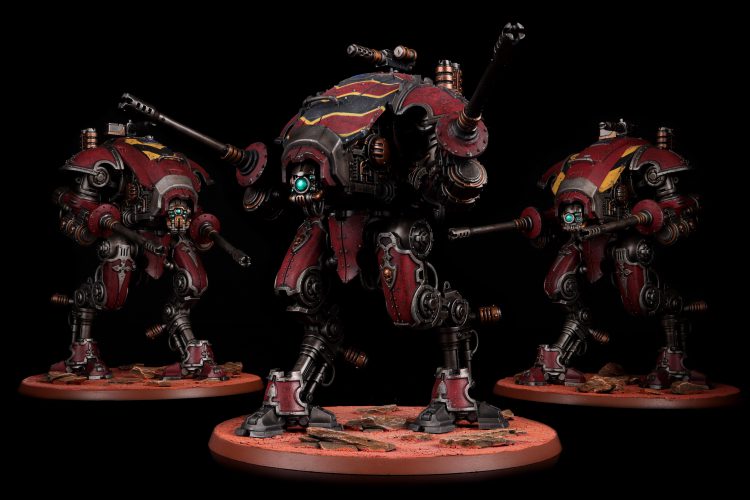
Credit: Pendulin
The juicy stuff for Imperial Knights in this book definitely lives here, and it offers them something genuinely unique over their Chaos counterparts, helping redress the balance of Chaos winning bigger on faction traits. The angle they’ve taken on these to make them interesting is a good one – the majority of them are tied to a specific variant of Knight. That’s a great design choice, because while in theory the various Knights are meant to have an individual flavour, in practice the fact they draw from a small weapon pool means that people don’t tend to think too much about it. In addition, the Knight Crusader is such a vastly superior unit compared to the rest that you basically only see those and Wardens in lists aiming for serious tournament placing.
That might change out of this, as these have been well tuned – it’s clear that the designers were aware of the current power level disparity, as several of the historically weaker Knights pick up more substantial boosts. I’m not 100% certain if it will be enough to get them into lists but it’s still a design success – it makes more of the variants at least worth thinking about, and provides a big help to more casual players who have built one of the non-crusader variants because they’re cool.
There are a trio of more generic stratagems before we get into the specific ones. These are:
- Hurled Wreckage: For 1CP, when you kill a VEHICLE or MONSTER with a thunderstrike gauntlet or relic equivalent, if you choose another VEHICLE or MONSTER as the target for your throw, it automatically hits and deals 3MWs. Taking a gauntlet isn’t super common and this isn’t a massive draw towards it, but it is hilarious and pretty powerful, so worth a B.
- Flanking Maneouvre: This is weird. For 1CP, a Knight can auto-advance 8″, but must end the move within 12″ of a board edge and can’t charge. Like, very occasionally this will be an effect you want, but the limitations are severe – unless you’re House Raven this is effectively turning one of your Knights off for the turn, and especially in light of today’s announcement about board sizes I’m struggling to see this being something you need often. It will come up, and will occasionally be the game-winning magic you need, but while I’d normally rate this effect highly the limitations make it a C+ from me.
- Trophy Claim: After you kill a TITANIC model, get +1A for the rest of the game. Nah. Effects like this have to be real good to be properly worth it, and this isn’t really one of them. If you’re in a Knight-on-Knight showdown and you’ve charged and killed an enemy, chances are good you’ll get countercharged and killed on the next turn. If they countercharge you and don’t kill you, congratulations, you have probably already won the game, and swinging back with one additional attack is just salting the wound rather than a necessity. C
WIth those out the way, time to look at our Knight classes.
Starting with the junior Knightly forces, Armiger Helverins get Thin Their Ranks, which as previewed on WarCom (and looked at in Hammer of Math) lets you max out your shots on a model against units of 6 or more models. This is one of those abilities that’s basically just priced to move – there’s almost no situation where you’d be wrong to use if if you want a valid target dead, and it also gives a given Helverin more valid targets some of the time. A solid B+.
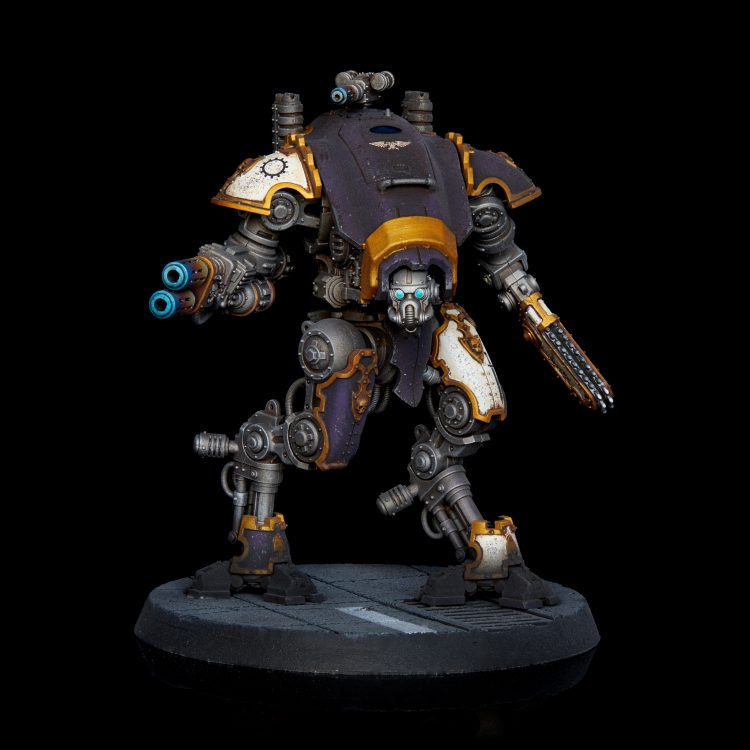
Armiger Warglaives get a cool sounding ability that probably proves a bit hard to use in practice. If more than one is within 1″ of a single enemy in the fight phase, they all get +1A against that target for each other one present, to a maximum of +2. On the offence I think this is hard to get value out of – you generally want your threats to be able to operate independently and go where they’re needed, and should probably not be committing to situations where you’re relying on this to get the job done. Where I can see value is when using Warglaives as a reactive threat – this makes a pair of them acting as line guardians a significantly bigger deterrent to foes of all sizes – their ability to switch to sweep mode against hordes lets this get value even when charging them. I’m torn between a C+ and going up to a B on this one, but I think I’ll leave the lower grade – it’s probably just a little bit too fiddly too much of the time.
Sizing up, we move on to something pretty decent for the Knight Errant (thermal/melee), who can use Close-Quarters Destruction for 1CP to re-roll shooting wounds within half range. Using this obviously does open yourself up to a lot of variance with the shot roll on the thermal cannon, but you can stack the deck substantially in your favour by buying a stormspear rocket pod for a guaranteed three Krak missile shots to go with this. Icarus cannons are also a decent shout in a pinch. This will still underwhelm some of the time, and an Errant with the stormspear is getting towards Crusader prices, but it’s a very nice addition to their capabilities and worth a B.
Next up we have the surprisingly brutal Capacitor Charge for Knights Preceptor, letting their gun guarantee a full six shots on the short ranged mode for 1CP. I had this vague idea in my head that these had gotten a lot cheaper in CA and they have – a basic Preceptor runs you 372pts, tied with a Knight Gallant for cheapest big Knight, and I honestly have to say that this is enough to make me vaguely interested in one, perhaps sitting in a slot otherwise occupied by a Knight Warden to save points. Probably never more than one, because you basically want this always on as soon as you’ve closed within range, but this is legitimately extremely spicy. Armigers seem to be perpetually nearly good enough as well, so anything that helps bump them over the line is interesting. This gets a B+ overall.
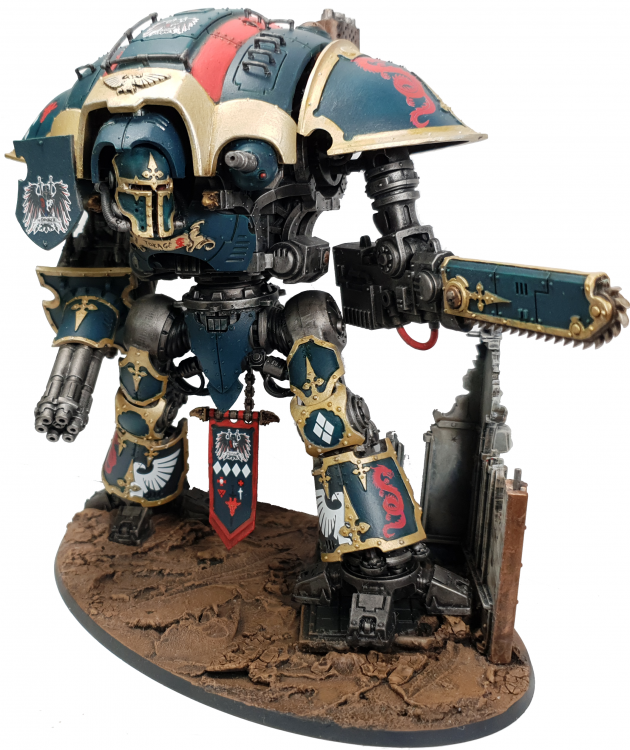
Our next Knight on the list is the Warden (gatling/melee), who can use Belligerent Machine Spirit to auto-hit with an Avenger Gatling cannon within 8″. There’s not a massive amount to say here – this is good for four extra hits on average, and roughly brings a vanilla AGC in line with Endless Fury when you can get it off. According to my notes, Endless Fury is “real good”, so you should probably use this when you can. Especially because Wardens are already good, this can have an A.
Gallants get the Linebreaker stratagem, allowing them to both pile in and consolidate 6″ for 1CP. This probably doesn’t solve them not really having a place since their point hike, especially now taking a Preceptor for “very cheapest Knight” is viable-ish, but I guess if you’re House Terryn this might let you set up trashing multiple enemy units in a turn with Glory in Honour! It also lets you get a truly eye-watering amount of ground cleared in your opponent’s turn if you combine it with Tireless Duty or put it on a Freeblade. I don’t think this gets Gallants back into lists, but it’s cute and worth knowing about. C+
The stratagem for the infamous Knight Crusader sensibly doesn’t jack up their already considerable output but is still handy, letting you suppress the overwatch of anything that suffers damage from one of the main guns for 1CP using Cover the Advance. This is definitely only a “sometimes” ability – if you’re charging with Knights the number of things you have to worry about the overwatch of is pretty slim, though they do exist, and are things you don’t mind softening up a bit like dev Centurions. It can also be useful if you bring a Crusader with another force – Sisters in particular tend to want overwatch suppression bad, and this provides an alternative option to an Inquisitor, also shoring up their lack of ranged firepower. I don’t think this massively changes how likely you are to bring a Crusader in lists, and I can imagine whole games where you have one and don’t use it, but it’s good enough when it’s on to still get a B.
Our final Questoris entrant is a good one – Knight Paladins (RFBC/melee) can make their rapid fire battle cannon damage 3 for a phase with Thunderstruck for 1CP, and this notably does include the House Terryn relic Thunder of Voltoris. On a vanilla Paladin it’s a decent boost but you do run the risk of a low roll. On the Thunder it’s exceptional – with 3d6 drop the lowest and S9, this packs serious killing power to the extent that I think it’s genuinely worth trying to find a way to slot into lists. One option I’d wonder about would be bringing a detachment of a Paladin with this and two Warglaives to ensure you get faction traits, and then have the option of outflanking the Knight with this when you’re going second. You come in from a board edge, blow something to bits with the gun, then do a 3d6 drop-lowest 8″ charge into something else. It ain’t cheap CP wise, and I’m sketchy if building a non-pure list where you can afford to dump 3CP on outflanking will remain viable given what we’ve heard of 9th, but for the last stretch of 8th it’s moderately interesting. I’d also wonder about using Terryn as a place to do a diverse force of Knights aiming to lean on these stratagems, maybe Paladin-Warden-Preceptor. Overall, this is probably a B on a vanilla Crusader, but is sufficiently great on a Terryn one that I’m desperately trying to tetris them into an actual army, so can have an A there.
That leaves only the Dominus classes, and we can get the Castellan out the way first. This only gets the rather dull Siegebreaker Bombardment, which lets it add +! to wound with its Siegrebreaker cannons it stays stationary. Like, it’s fine when it’s on but it’s pretty tame, and staying still is a real cost you often don’t want to pay. It gets a C, and a worry from me that GW’s designers are terrified of ever letting the Castellan be good again.
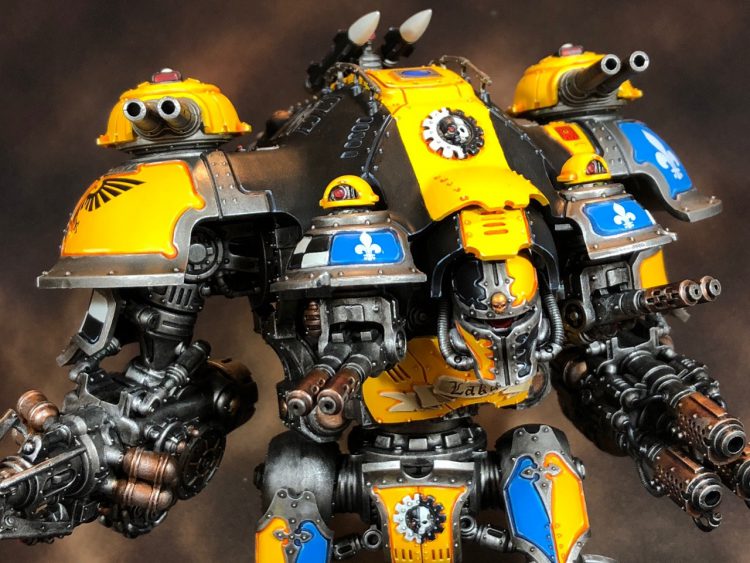
The Valiant comes out a bit better, with not one but two stratagems. The first, Electrothaumic Overload, is possibly the most entertaining in the book – for 2CP after damaging something with the Thundercoil harpoon you deal d3 MWs to every enemy unit within 3″ of the target (which, at least as currently worded, includes an additional d3 to the first one). You don’t need to catch that many things in this for it to be worthwhile, and it can punish some bunched up armies hard. It also opens up the option of tagging a wide-spread INFANTRY unit with the harpoon to scatter the mortals far and wide. This does potentially need a quick FAQ look – if fired at a single target, it sort of doesn’t work if you kill it with the attack, as there’s no model for other units to be within 3″ of any more? I’m sure it will get sorted – this is great fun, yet another temptation to try and use these, and adds a surprising amounf of flexibility via punishing daisy-chained infantry, so gets a B+. The other strat is also good, letting you give enemies -2″ to their charges after this model fires overwatch. Notably, this affects all charges, not just the one it was triggered on – so even if the first thing gets in, an opponent multi-charging gets the penalty on later ones. I don’t love that this can’t be used against enemies that can suppress overwatch, as suppressing overwatch is kind of a pre-req to charging a Valiant with a lot of stuff, but if your opponent has to gamble on a long charge and you can use this you absolutely should, so it gets a B.
Overall there’s some really cool stuff here that definitely encourages a wider variety of experimentation backed up by some solid add-ons for the faction’s workhorses – exactly what you want to see from a stratagem extension.
Custom Households
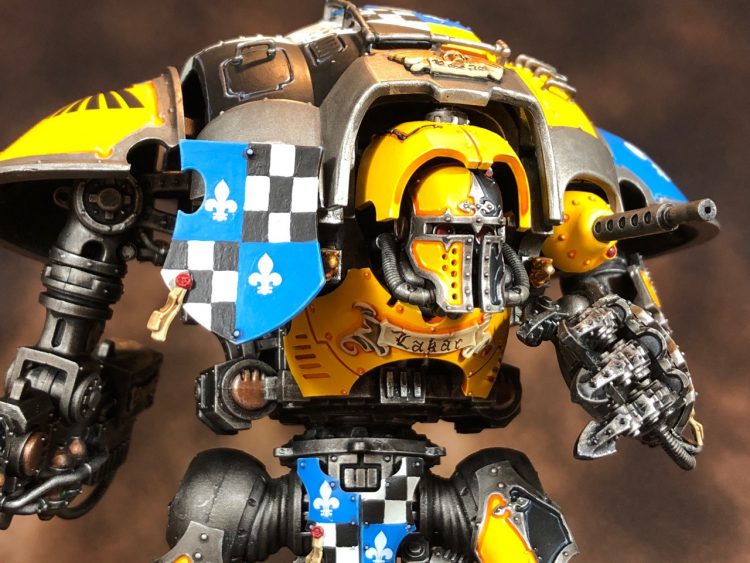
The last new option Imperial Knights get in their own rules is access to the ability to design your own Household trait. Unfortunately, this doesn’t land super well here, and I think this will end up being a novelty at best. The fundamental problem here is that the effects are almost identical to the ones available to Chaos Knights, which you will have seen in our review yesterday – but the effective cost of taking them is way higher. When you build a custom house you still get to keep your Allegiance traits, but lose any of the benefits of being a member of a named house. As we discussed at the start of this, the Imperium has a lot of its power concentrated in the Households while Chaos gets vastly more from the Allegiances – both the Iconoclast and Infernal traits provide powerful effects you can hunt for synergies with among the custom options, whereas the Imperialis and Mechanicus traits are kind of just there and need you to bring the big guns from elsewhere. You can definitely build faction traits of comparable power to some of the core ones here, but losing access to the Household relics, stratagems and traits is just such a huge blow that I struggle to see why you’d go this route, whereas for Chaos “lean in to my Allegiance trait” is a real motivator.
With that in mind, we aren’t going to re-hash everything here – if you want a deep dive into the set of effects, look at yesterday’s piece. The only different one is Pains of Old Night, which uses both slots and grants re-roll 1s against Psykers and Daemons, and is in no way worth it unless you have a very odd metagame indeed.
Instead, I’ve racked my brains for the things the Imperium specifically does better than Chaos that can interact with these to throw some ideas out. I’m not convinced they’ll get over the line, but it’s interesting as a thought experiment:
- The Imperium gets cheaper avenger gatling cannons, so Wardens are specifically cheap. That could be nice with Front Line Fighters, maybe in concert with Stormstriders to get them straight into range.
- The Imperium has better support relics for Armigers. Using The Helm Dominatus with a bunch of Helverins/Moiraxes heading in close with Front-Line Fighters and Hounds of War (so they don’t get bully charged constantly) seems cute. Front-Line fighters is also extremely good with rad-cleansers on Moiraxes, but I suspect Chaos can do that trick better.
- The Imperium has a nice set of strats to boost up its single-gun Knights, so perhaps Unremitting has more play here than the Chaos version in a list trying to lean on these effects.
Honestly, that’s kind of it. I expect the big gain out of this book to be the new strats and this to largely pass the competitive world by. Inevitably, having said that, someone will find a busted combo and I’ll look very silly. Bring it on.
Imperial Synergy
Adeptus Mechanicus
Questor Mechanicus Knights tend to be the more powerful of the two flavours, and work extremely well in concert with AdMech. As you may have seen yesterday, AdMech just got a whole helping of new toys, but two things stand out for Knight players:
- Serberys Raiders are great with Knights – they provide a fast screen that can operate effectively as board control, provide a big reservoir of wounds for psychic armies to have to chew through, and can do some nifty charge protection with Tactical Obliqua.
- As it stands (though I do think there’s a better chance of this interaction staying than cross-applying between Forge Worlds), the fancy new Forge World canticles can be applied via Knight of the Cog.
The latter is primarily interesting with Mars (for +1S on heavy weapons), Lucius (+1 Invuln save to a max of 4++) and Ryza (+1AP in melee, though be wary with this one that the requirement to be within 12″ of an AdMech character is a real drawback). Mars is potentially extremely good if you’re going in on Wardens or Crusaders with RFBCs – 8 to 9 is a key break point for strength, and 6 to 7 is relevant a lot of the time. Going all-in on a solo Taranis or Krast Crusader with an RFBC and stormspear to use with this seems plausibly good – the quality of firepower you get is truly heinous. I do overall mostly continue to be On One about Lucius though – the option to effectively Rotate Ion Shields on all of your big knights as alpha strike protection is…well it’s certainly something!
Having to designate an AdMech character as your warlord is, of course, a real drawback here, as it means you’re likely to end up paying additional CP to get all of the juicy traits you want. We’ll have to see exactly how 9th impacts on CP allocation for this kind of army before making a call if it actually ends up relevant, but in the meantime it’s fun to have more things to experiment with.
Serberys Raiders are definitely very good boys though, and you should use them to screen your knights.
Imperial Agents
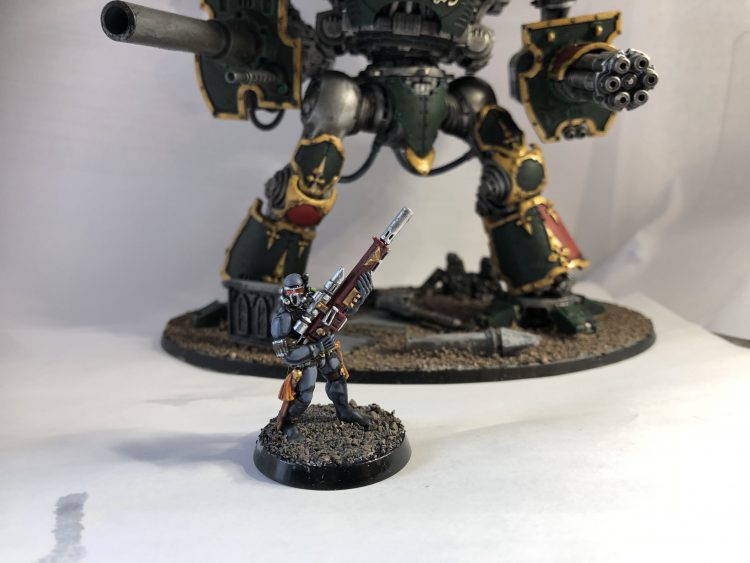
Finally, it’s worth flagging up that both Assassins and Inquisitors remain strong considerations for Knight armies. I will admit that what I found when trying to build lists with the new tools is that you’re a bit more squeezed than before on both points and CP, so this is a little harder to do – paradoxically, the cheaper knight options being more viable increases your incentive to try and shuffle things around to slot an extra robot in rather than settling for a ~100pt character. Knights do very well on game plans where they overwhelm their enemies, so any of the choices that keeps your opponent under pressure, most notably Callidus and Vindicare Assassins or Coteaz/Hector Rex for psychic shutdown have great synergy with this plan. For my lists I’ve stuck to squeezing in bodies, but don’t be afraid to try these out!
Lists
That’s it for new stuff, so the only thing that remains is to ask ourselves how we could potentially use it. Now, disclaimer up-front – I strongly suspect that the standard triple-Crusader and friends builds will remain the go-to way to run knights, and indeed any Knight army you were already running successfully will basically be the same but with some minor tune-ups! However, just writing “Triple Crusader, two Battalions” would be real boring, and also quite likely incredibly wrong come 9th. What I’ve done instead is had a think about what new list building options I might be interested in exploring after this book that I might not have done before. Since Knight lists are real quick to write, I’ve done not one but three lists – a Pure Knights build and then soup lists for each of the Questor Imperialis and Questor Mechanicus. Of these, the last (or some lightly modified version of it) is probably closest to what a “safe” competitive build might look like, but the other two show off more of the new stuff from this book.
Pure Knights
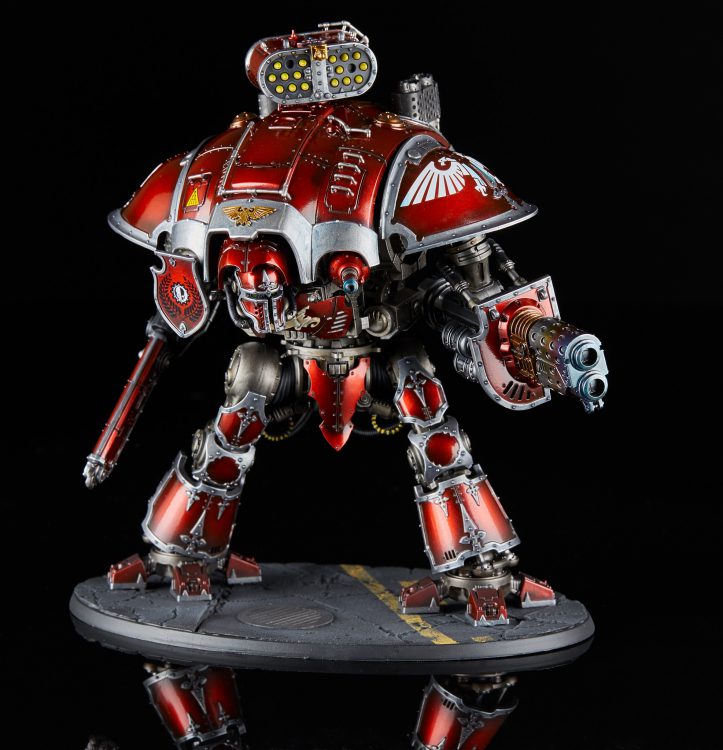
House Krast Super Heavy Detachment
Knight Crusader, RFBC, ironstorm pod, knight lance character, warlord – First Knight, Headsman’s Mark – 494
Knight Warden, chainsword, ironstorm pod, Heirlooms of the Household – Endless Fury – 422
Knight Errant, chainsword, icarus autocannons, Exalted Court – Landstrider – 413
House Krast Super Heavy Detachment
Knight Preceptor, gauntlet, Knight lance character – 377
Armiger Warglaive -147
Armiger Warglaive -147
The big win for trying to build pure knights out of this book is that both the single-gun Knights and (especially) the Preceptor are way more defensible choices now that they have access to stratagems to increase their output. Combining that with discounts to the Preceptor and Warglaives, you can just squeeze four relevant big knights and the Warglaives to fill out a second detachment into the list, giving you lots of juicy CP to play with and extra bodies to bully your opponent with. I’ve picked house Krast for this because it unlocks the option of running the Krastsader as a general problem solver, and their melee re-rolls help make the army extremely active in multiple phases, giving them a leg-up against hordes and letting the list play extremely aggressively. A list with 6 bodies running around also gets more benefit from the Questor Mechanicus boost, and can afford to find a slot for Landstrider rather than needing the Imperialis buff.
The Warlord trait/relic loadout will obviously change from matchup to matchup, I’ve just put what is a sensible starting point in. If you see other Knights I would definitely look at the Paragon Gauntlet on the Preceptor instead of Endless Fury (and let the Warden lean on their new stratagem instead), while if your opponent has no vehicles the Crusader can switch to the Armour of Sainted Iron. The way the options are assigned at the moment is deliberately intended to make all four big Knights CHARACTERS too, as that helps with board control via heroic intervetions.
Pure Knights doesn’t stop being “hard mode” with this book, but I definitely think I’d be happier trying to play with the above than lists I’ve seen before. Also this list is 2000pts on the dot, and I think I deserve a medal for managing that with Knights.
Questor Imperialis
House Terryn Super Heavy Detachment
Knight Valiant, 2 twin siegebreakers, 2 missiles, knight lance character, warlord – Ion Bulwark, Traitors Pyre – 594
Knight Paladin, ironstorm pod, chainsword, Heirlooms of the Houses – Thunder of Volturis – 435
Knight Warden, ironstorm pod, Exalted Court – Strike and Shield – 422
Valorous Heart Battalion
Celestine – 160
Canoness, brazier, inferno pistol – 60
Imagifier, Tale of the Stoic, Heroine in the Making – Indomitable Belief – 45
10 Sisters w/2 Storm Bolters – 94
10 Sisters w/2 Storm Bolters – 94
10 Sisters w/2 Storm Bolters – 94
I just really want to harpoon things OK? This list focuses on what you really want to be doing with Imperialis Knights, which is slamming them into your opponent’s face. To ensure that our brave Knights can get on with that while not worrying about trifling things such as holding objectives, and to lean in to the Imperialis theme, we’ve brought 30 nails-hard Sisters, backed up by Celestine as a counter-charge threat and late-game troubleshooter. The Sororitas also provide psychic protection, and I’ve deliberately picked a brazier on the Canoness to open up the option of buying the Brazier of Eternal Flame against Grey Knights or Thousand Sons, helping offset the volley of smites that’ll be coming towards the army.
The overall goal here is to have no easy targets, making it a real challenge for your opponent to pick up kills “on demand”, and for the backline to be tough enough that your opponent doesn’t have the option of picking them off at range while kiting the Knights around objectives – if they want to crack your objective holders they have to deal with the Knights first, and that’s non-trivial. When they do, you’ve got access to Valiant Last Stand to punish them for it, which is especially powerful on the relic-wielding Valiant, who will hopefully take something with them!
As a last, vital strategic tip, make sure to shout “HARPOONED” every time you kill something with the harpoon. Your opponents won’t respect you otherwise. Seriously, I’ve lost a Wave Serpent to the harpoon on overwatch and I couldn’t even be mad, it was so funny.
Questor Mechanicus
House Taranis Super Heavy Detachment
Knight Crusader, thermal, ironstorm, knight lance character Heirlooms of the Houses – Endless Fury – 468
Knight Crusader, thermal, ironstorm, Exalted Court – Cunning Commander – 468
Knight Errant, icarus autocannons, Heirlooms of the Houses – Fury of Mars -413
Lucius Battalion
Tech Priest Dominus, Eradication Ray, warlord – Divinations of the Magos – 82
Tech Priest Enginseer – 30
9 Serberys Raiders w/enhanced data tether – 133
5 Skitarii Rangers – 35
5 Skitarii Rangers – 35
5 Skitarii Rangers – 35
Onager Dunecrawler, icarus array – 100
Onager Dunecrawler, icarus array – 100
Onager Dunecrawler, icarus array – 100
This final list is probably what I’d rack up for an event if I wanted to try something a little different, and focuses on resilience. Using the ability to cross-canticle, you can have turns where all three Knights are 4++ with a 6+++ and the Onagers are on 4++ re-rolling 1s, and all the infantry are on a 5++. Playing as Taranis also lets you stick the Fury of Mars on an Errant, which works very well with their new stratagem thanks to the increased range – it’s extremely likely to be active against relevant targets from turn 1. The Serberys Raiders also complement Taranis especially well, as getting smote down is one of the house’s few weakpoints, so a whole Knight’s worth of fast ablative wounds is extremely welcome.
I’ve gone a bit lighter on warlord traits here, taking only Cunning Commander which pays for itself, to save on CP to use in-game – the list starts with 11, and you definitely want 3 points available for applying mass 4++s (it’s part of the point of the list), some to power the Errant and the dogs, and ideally save the last few for Our Darkest Hour. I think the list gets away with it – it’s got a prepostorous amount of shooting output, covers the backfield and is hard to shift off the board even by the standards of a Knight list. That’s more than enough to ask some searching questions of any opponent, and I think this list would play great!
Wrap Up
We’re nearly there with Engine War! We’ll have more from Hammer of Math coming on Monday and probably a few more things after that, so if you’re still hungry for more robot action, stay tuned, and of course we also still have Chaos Daemons to talk about later this afternoon courtesy of Rob. Overall I think this is a great entry in the Psychic Awakening series – while some of the factions within get a bit more than others, everyone comes away with some seriously worthwhile boosts to be happy about, and that’s exactly what we like to see. If you have any comments, questions or suggestions, hit us up at contact@goonhammer.com.
